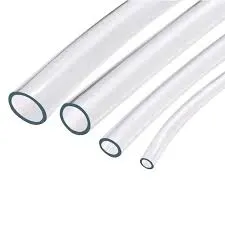ធ្នូ . 02, 2024 01:10 Back to list
High-Density Polyethylene Plate Applications and Benefits for Various Industries
The Versatility and Benefits of HDPE Plates
High-Density Polyethylene (HDPE) is a thermoplastic made from petroleum. It is known for its high strength-to-density ratio and is widely used in a variety of applications, from packaging to construction. One of the most notable forms of HDPE is the HDPE plate, a versatile material that has gained importance in many industries due to its unique properties.
Characteristics of HDPE Plates
HDPE plates are lightweight yet incredibly strong, making them ideal for applications requiring durability without added weight. Their resistance to impact means that they can withstand heavy use and are less likely to break or crack compared to traditional materials like wood or metal. Additionally, HDPE plates possess excellent chemical resistance, allowing them to be used in environments that require contact with various chemicals without degrading.
Another key feature of HDPE is its low moisture absorption. This property makes HDPE plates impervious to water, which is particularly beneficial in applications where exposure to moisture could compromise the integrity of the material. Furthermore, HDPE plates are UV resistant, which means they can be used outdoors without fear of sun damage, fading, or deterioration over time.
Applications of HDPE Plates
The applications for HDPE plates are vast and varied. In the agricultural sector, HDPE plates are often used for making water troughs, liners for ponds, and numerous other farming applications. Their resistance to chemicals and moisture makes them suitable for contact with fertilizers and pesticides, ensuring long-lasting durability.
hdpe plate

In the construction and manufacturing industries, HDPE plates are commonly utilized for industrial work surfaces, protective barriers, and even as components in various machinery. Their ability to be easily machined or fabricated into different shapes and sizes caters to a range of specific needs within these sectors.
Additionally, HDPE plates are finding their place in the food industry. They are often used for cutting boards, trays, and containers because they are easy to clean, non-toxic, and inert, meaning they won’t react with food products. Their smooth surface helps in maintaining hygiene standards, making them an excellent choice for food preparation environments.
Environmental Considerations
In recent years, the environmental impact of materials has become a significant concern. HDPE, being recyclable, presents an eco-friendly option compared to many other materials. Many HDPE products can be recycled and repurposed, contributing to a circular economy and reducing waste. Additionally, HDPE plates can be produced from recycled materials, further minimizing their environmental footprint.
Conclusion
HDPE plates stand out as a remarkable material due to their strength, versatility, and resistance to a variety of environmental factors. With applications spanning agriculture, construction, manufacturing, and food service, they provide a practical solution for many industries. As the demand for sustainable materials continues to grow, HDPE plates not only meet specific functional requirements but also support environmental sustainability through their recyclability. Investing in HDPE plates not only enhances operational efficiency across various sectors but also contributes positively to the world’s effort in pursuing a greener future. In essence, HDPE plates represent a blend of functionality and environmental consciousness, making them an excellent choice in today’s material landscape.
-
Durable PP Rigid Sheet: Lightweight, Chemical Resistant Solutions
NewsAug.21,2025
-
PVC Grey Sheet for Extraction: Chemical Resistant & Durable
NewsAug.19,2025
-
Durable PVC Pipe Fittings for Plumbing & Irrigation Needs
NewsAug.18,2025
-
HDPE Steel Belt Reinforced Spiral Corrugated Pipe | High Strength
NewsAug.17,2025
-
HDPE Pipe Fittings: Durable, Leak-Proof Solutions
NewsAug.16,2025
-
Premium CPVC Sheet: High-Temp & Chemical Resistant Solutions
NewsAug.15,2025

